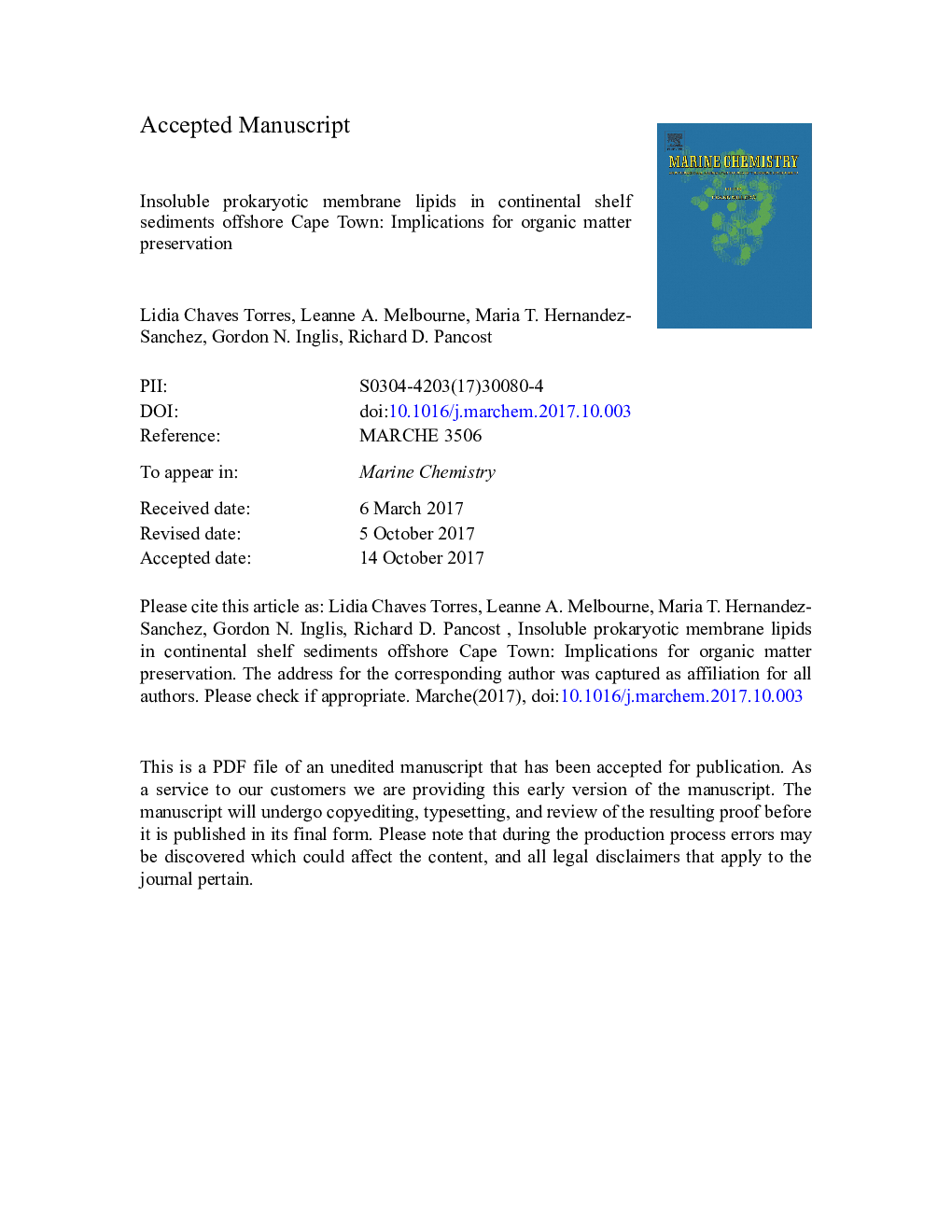| Article ID | Journal | Published Year | Pages | File Type |
|---|---|---|---|---|
| 7698956 | Marine Chemistry | 2017 | 42 Pages |
Abstract
The largest organic carbon (OC) reservoir on Earth is in the geosphere, mainly comprising insoluble organic matter (IOM). IOM formation, therefore, plays an important role in the short and long-term carbon cycle, carbon bioavailability and formation of source rocks. To explore the mechanism of insolubilization of organic matter (OM), we have analysed soluble and IOM fractions of continental shelf marine sediments. We have applied sequential solvent-extractions followed by a selective chemical degradation of the post-extraction residue, specifically targeting prokaryotic membrane lipids (branched fatty acids - FAs, hopanoids, archaeol and glycerol dialkyl glycerol tetraethers - GDGTs). Up to 80% of prokaryotic membrane lipids are not solvent-extractable, and we observe compound-specific differences in partitioning between soluble and IOM fractions. Based on these observations, we propose a variety of mechanisms for the incorporation of prokaryotic lipids into IOM in marine sediments: First, OM association with authigenic carbonates; second, cross-linking via esterification reactions with time, which could be particularly relevant for FAs; third, competition between reactivity and loss of polar head groups, the latter rendering the OM less susceptible to incorporation; and finally, inherent solvent-insolubility of some lipids associated with prokaryotic cells.
Related Topics
Physical Sciences and Engineering
Chemistry
Chemistry (General)
Authors
Lidia Chaves Torres, Leanne A. Melbourne, Maria T. Hernandez-Sanchez, Gordon N. Inglis, Richard D. Pancost,
